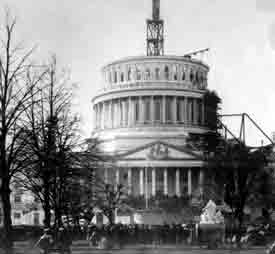
With all the optimism of the day, certain things have not changed. One of them is the requirement that the credit crunch ease first in order for home sales to begin to flow at a more elevated level.
One of the ways I have been describing (as have many others) the unwinding of housing has been an “L” shaped recovery rather than a “V”. With the credit contraction, once liquidity returns, the excess housing inventory will likely keep the housing market tame for a number of years, rather than bounce back up.
Paul L. Kasriel of Northern Trust characterizes the economic recovery as more of a “W” with a lot of volatility in the next 4-5 years.
>The current
economic environment is indeed bleak and there are precious few signs of a recovery. But we
believe that if the massive fiscal stimulus package being worked up in Congress is financed
largely by the banking system and the Federal Reserve, there is a good chance the economy
will begin to grow by the fourth quarter of this year and continue to do so throughout 2010.
And if we are correct on this, we also believe there is a good chance that the consumer price
index will be advancing at a fast enough pace by the second half of 2010 to induce the Federal
Reserve to become more aggressive in draining credit from the financial system. This could
set the stage for another recession commencing in 2012, or perhaps some time in 2011. So,
the shape of the path of economic activity we see over the next few years is not a “V”, a “U”,
or an “L”, but a “W” – down, up, down, up, all within four or five years.
Although the stock market fell 4% today, seemingly the only damper on what was an historic and euphoric day, the last president to see the stock market rise on inauguration day was JFK.
Still we look for clues for economic recovery and accurate characterizations of the state of the financial markets.
And Randall Forsyth in Barrons moves the Great Depression comparisons forward from 1932 to 1938.
>A better analog may be the 1938-42 period, says Louise Yamada, the eponymous head of Louise Yamada Technical Research Advisors…Investors would be quite pleased if the pundits were right and if this were 1932 all over again. That year marked the bottom after the 89% collapse that only began with the Great Crash of 1929. From its 1932 low, the Dow would rebound and more than quadruple by 1937. Fortunes could have been made in that rally, for those who had capital to commit to the market by then….In 2004, Yamada offered what she called an Alternative Hypothesis, that 2002-2007 would resemble 1932-37. And the market has tracked the pattern of 70 years earlier closely, even eerily. From a double bottom in late 2002 and early 2003, the market rallied strongly into early 2004, which was a year of correction. Then came a renewed uptrend from 2005 until a double top in 2007, into the great debacle of 2008.
While we can all learn from history, and the always exaggerated crowd counts on the Mall, the Obama Inauguration set a record for the number of private jets that flew in to see the festivities.
At least jet fuel prices are lower than my expectations for a quick economic recovery.
One Comment
Comments are closed.


In addition to housing inventory keeping the market down after liquidity issues ease, I suspect we’ll also see a change in the US consumer, at least for a time. We tend to have short memories, but this crisis may just be bad enough to linger in the minds of the American consumer for some time.